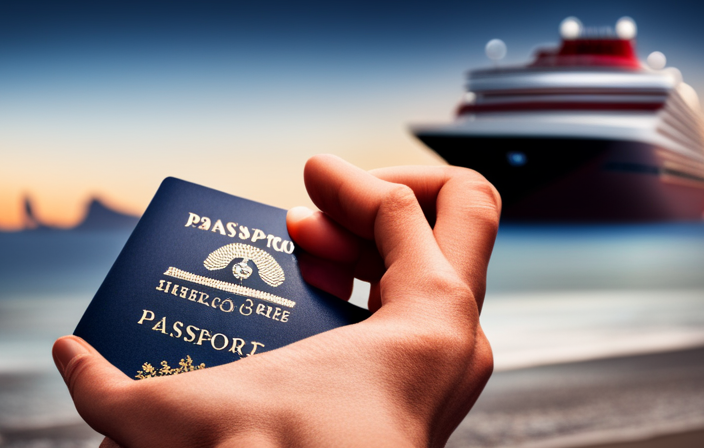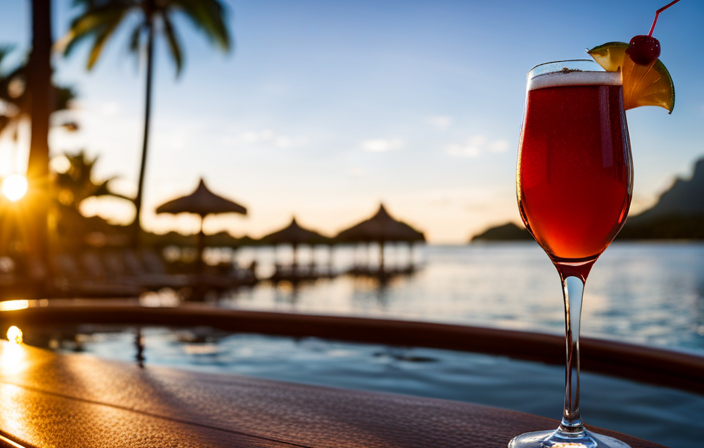Cruise FAQs
What Is The Best Room On A Cruise Ship For Motion Sickness
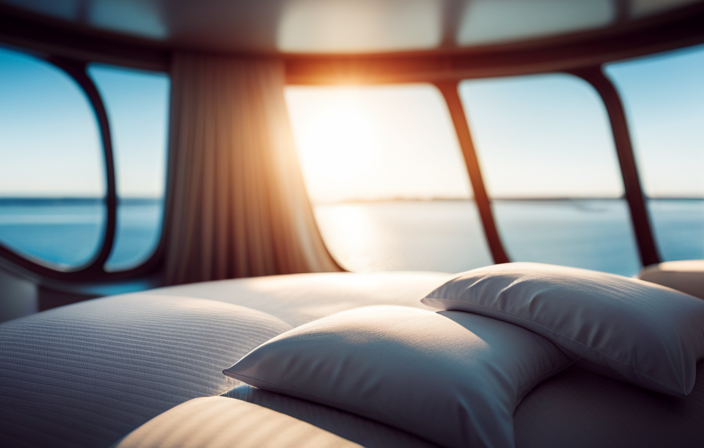
As soon as I step onto a cruise ship, a surge of excitement and anticipation envelops me. The thought of exploring new destinations and indulging in limitless relaxation is absolutely enthralling.
However, for those of us who suffer from motion sickness, this excitement can quickly turn into dread. The constant movement of the ship can leave us feeling queasy and uncomfortable. But fear not! I have embarked on countless cruises and have discovered the secret to finding the best room for motion sickness relief.
In this article, I will share my knowledge and experiences, providing you with valuable insights on choosing the right cabin, optimal locations, and even additional tips and remedies. So, sit back, relax, and let me guide you towards a smooth and enjoyable cruise experience, free from the grip of motion sickness.
Key Takeaways
- Booking a cabin in the middle of the ship provides more stability and helps reduce motion sickness.
- Choosing cabins with windows or balconies can provide visual reference points and help alleviate dizziness.
- Opting for light snacks, staying hydrated, and avoiding heavy meals and alcohol can help manage motion sickness on a cruise.
- Experimentation is key as individuals may have different preferences and sensitivities, so it’s important to find what works best for each person.
Understanding Motion Sickness on Cruise Ships
If you’re prone to motion sickness, understanding how it can affect you on a cruise ship is key to finding the best room to make your voyage as smooth and enjoyable as possible.
Cruise ship activities can exacerbate motion sickness symptoms, so it’s important to manage them effectively. One way to do this is by choosing a cabin that is located in the middle of the ship, as this area tends to experience less movement.
Additionally, opting for a cabin that has windows or a balcony can help provide a visual reference point, which can ease symptoms of motion sickness.
In the next section, we will explore how to choose the right type of cabin for a more comfortable cruise experience.
Choosing the Right Type of Cabin
When it comes to selecting the perfect stateroom for a smooth sailing experience, you’ll find that opting for a cozy hideaway nestled in the heart of the vessel can make all the difference. Here are four essential factors to consider when choosing the right type of cabin:
-
Cabin amenities: Look for cabins with comfortable beds, ample storage space, and a private bathroom. These amenities will ensure a pleasant stay, even if you experience motion sickness.
-
Noise levels: Avoid cabins near high-traffic areas, such as elevators or entertainment venues, as they can be noisy and potentially aggravate motion sickness symptoms. Opt for cabins in quieter sections of the ship.
-
Midship location: Cabins located in the middle of the ship experience less rocking and swaying motion, making them ideal for those prone to motion sickness.
-
Lower decks: Cabins on lower decks tend to have less movement compared to those on higher decks, providing a more stable and comfortable experience.
Considering these factors will help you find the optimal cabin for motion sickness relief.
Now, let’s explore the best cabin locations for a smooth sailing experience.
Optimal Cabin Locations for Motion Sickness Relief
When it comes to finding the optimal cabin location for motion sickness relief on a cruise ship, there are a few key points to consider.
First, I highly recommend choosing a cabin near the center of the ship. This area experiences the least amount of movement and can help minimize the effects of motion sickness.
Additionally, opting for lower decks and lower floors can also be beneficial as these areas tend to have less sway and turbulence.
Lastly, it’s important to avoid cabins with obstructed views as they can contribute to feelings of nausea and disorientation.
Near the Center of the Ship
For the smoothest sailing experience, you’ll want to choose a room near the center of the ship. When it comes to cabin location, this is one of the best options for motion sickness relief. Being closer to the center helps to minimize the rocking and swaying sensation that can trigger motion sickness.
The middle of the ship acts as a stabilizer, reducing the amount of movement felt by passengers. Whether you’re on a large cruise ship or a smaller vessel, selecting a cabin near the center can greatly improve your comfort level while onboard.
However, if you’re looking for even more relief, you may want to consider the lower decks and lower floors. These areas tend to experience less motion because they are closer to the ship’s center of gravity.
With this in mind, let’s explore the benefits of choosing a room on the lower levels.
Lower Decks and Lower Floors
To enhance your cruise experience and increase your comfort level, opting for a cabin on the lower decks and lower floors can be a great choice. These areas of the ship are generally more stable, reducing the likelihood of feeling seasick. Lower decks also tend to have less motion and vibrations compared to higher floors, which can further alleviate any discomfort. Additionally, interior cabins, which are typically located on the lower decks, provide an added benefit. Without windows or balconies, these cabins minimize the visual cues that can contribute to motion sickness. The combination of being on the lower decks and staying in an interior cabin can greatly reduce the chances of experiencing motion sickness during your cruise. Moving on to the next section, it’s important to consider avoiding cabins with obstructed views…
Avoiding Cabins with Obstructed Views
Located on the higher floors of the ship, cabins with obstructed views offer a limited perspective of the breathtaking ocean vistas, leaving you yearning for uninterrupted panoramas that truly immerse you in the beauty of the open sea. When it comes to avoiding balcony cabins, these obstructed view cabins can be a great alternative.
Here are some benefits of interior cabins:
-
Cost-effective: Interior cabins are often more affordable than balcony cabins, allowing you to save some money for other onboard experiences.
-
Less motion: Being located in the lower decks of the ship, interior cabins can offer a more stable experience, minimizing the chances of motion sickness.
-
Better sleep quality: Without windows, interior cabins provide a darker and quieter environment, perfect for a good night’s sleep.
Considering these benefits, interior cabins can be a wise choice for those looking to avoid motion sickness and enjoy a comfortable cruise experience.
Moving on to considerations for cabin size and layout…
Considerations for Cabin Size and Layout
When it comes to avoiding motion sickness on a cruise ship, it’s worth considering the size and layout of the cabin. The size of the cabin can play a significant role in how susceptible you are to motion sickness. Generally, larger cabins tend to have more stability as they’re located closer to the center of the ship, where the rocking motion is less pronounced.
Additionally, the layout of the cabin can also make a difference. Cabins with an open layout and minimal obstructions can help you maintain a sense of balance and reduce the likelihood of feeling nauseous. So, when choosing a cabin, keep cabin size and layout in mind.
Now, let’s move on to discussing the benefits of staterooms with windows.
The Benefits of Staterooms with Windows
After considering the size and layout of a cruise ship cabin, it’s important to think about the benefits of staterooms with windows. As someone who’s experienced motion sickness on cruises before, I can confidently say that having a window in your room can make a world of difference.
Here are three reasons why:
-
Natural Light: Staterooms with windows allow natural light to fill the space, creating a more pleasant and open atmosphere. This can help combat feelings of claustrophobia and make the cabin feel more spacious.
-
Enhanced Cruise Experience: The view from a window can be breathtaking, especially when sailing through scenic destinations. Waking up to stunning ocean views or watching the sunset from the comfort of your room can truly enhance your overall cruise experience.
-
Mood Boosting: Natural light has been proven to improve mood and mental well-being. Having access to sunlight in your stateroom can help combat any feelings of seasickness and create a more enjoyable and relaxing environment.
Now, let’s move on to discussing the importance of proper ventilation in cruise ship cabins.
The Importance of Proper Ventilation
Breathe in the fresh, invigorating air as proper ventilation in your stateroom ensures a comfortable and revitalizing experience throughout your cruise. Proper ventilation is essential for maintaining a healthy and pleasant atmosphere in your room. It helps to circulate the air, preventing it from becoming stale and stuffy.
Good air circulation also helps to reduce the risk of motion sickness by providing fresh air and preventing the accumulation of odors or pollutants. When the air is stagnant, it can exacerbate feelings of nausea and discomfort. By ensuring that your stateroom has proper ventilation, you can enhance your overall well-being and minimize the chances of experiencing motion sickness.
So, with the importance of proper ventilation in mind, let’s explore some additional tips and remedies for motion sickness.
Additional Tips and Remedies for Motion Sickness
Boost your well-being and minimize discomfort by discovering effective remedies and tips to combat the effects of motion sickness. When it comes to finding relief from motion sickness, natural remedies and alternative therapies can be incredibly helpful.
Here are a few options to consider:
-
Ginger: This powerful root has been used for centuries to alleviate nausea and can be consumed in various forms such as ginger tea or capsules.
-
Acupressure wristbands: These wristbands apply pressure to specific points on your wrists, which can help reduce feelings of nausea.
-
Aromatherapy: Essential oils like peppermint or lavender can be inhaled or applied topically to help calm the senses and alleviate motion sickness symptoms.
-
Breathing exercises: Deep breathing and focusing on your breath can help relax the body and reduce feelings of nausea.
Incorporating these natural remedies and alternative therapies into your routine can provide relief from motion sickness. However, if you find that your symptoms persist or worsen, it’s important to seek professional advice and assistance for further guidance.
Seeking Professional Advice and Assistance
If you’re experiencing persistent or worsening symptoms, it’s crucial to seek professional advice and assistance for guidance.
Professionals in the medical field can provide you with personalized recommendations based on your specific situation and help determine the best course of action. They may suggest over-the-counter medications such as antihistamines or prescribe stronger medications to alleviate your symptoms.
In addition to medication, they can also provide guidance on other effective remedies such as acupressure bands or ginger supplements.
Seeking professional advice is important because they have the knowledge and experience to provide you with the most up-to-date information and recommendations. By following their guidance, you can increase your chances of finding relief from motion sickness.
Now, let’s move on to personal stories and experiences to gain further insight into managing this condition.
Personal Stories and Experiences
Now let’s hear some personal stories and experiences to gain further insight into how individuals have managed this condition. Here are four personal anecdotes and tips for managing motion sickness:
-
One passenger shared that they found relief by booking a cabin in the middle of the ship, as it provided a more stable experience.
-
Another traveler mentioned that wearing acupressure wristbands helped alleviate their symptoms while onboard.
-
A seasoned cruiser recommended avoiding heavy meals and alcohol, opting for light snacks and staying hydrated instead.
-
One person shared that focusing on the horizon and getting fresh air on the ship’s deck helped them combat motion sickness.
These personal stories and tips highlight the various strategies individuals have used to cope with motion sickness while on a cruise. With these insights in mind, let’s move on to the final thoughts and conclusion section, where we’ll summarize the key findings and provide additional recommendations.
Final Thoughts and Conclusion
In closing, remember that finding your own sea legs in the face of this challenging condition is like discovering a hidden treasure chest of strategies and remedies. Personal experiences and expert opinions can provide valuable insights into the best room on a cruise ship for motion sickness.
While everyone’s experience may vary, some common recommendations include choosing a cabin in the middle of the ship, as it tends to have less movement. Additionally, opting for a cabin with a window or balcony can help provide a visual reference point and reduce feelings of dizziness. It’s also worth considering booking a cabin on a lower deck, as these tend to experience less motion.
Ultimately, it’s important to experiment and find what works best for you, as each individual may have different preferences and sensitivities.
Frequently Asked Questions
Are there any specific cruise ship companies that are known for having the best cabins for motion sickness relief?
Yes, there are cruise ship companies known for providing cabins that offer motion sickness relief. These companies prioritize the best cabin locations for passengers who are prone to motion sickness, ensuring a comfortable and enjoyable experience on board.
Can motion sickness be completely avoided by choosing the right cabin location?
Motion sickness cannot be completely eliminated by medication alone. The size of a cruise ship does not necessarily correlate with the likelihood of experiencing motion sickness.
Are there any specific layouts or features in a cabin that can help alleviate motion sickness?
Interior cabin design can impact motion sickness by providing stabilizing features like thicker walls, lower ceilings, and strategically placed furniture. The placement of the cabin within the ship can also affect motion sickness, with cabins located lower and midship experiencing less movement.
Is it better to choose a cabin with a window or without a window for motion sickness relief?
When it comes to choosing a cabin for motion sickness relief, cabin location plays a significant role. In my experience, having a window can provide a sense of orientation and help alleviate symptoms.
Are there any specific ventilation systems or techniques that are recommended for reducing the effects of motion sickness in a cabin?
There are specific cruise ship ventilation systems and techniques that can help reduce motion sickness in cabins. These include utilizing stabilizers, installing air purifiers, and implementing proper air circulation to minimize the effects of motion on passengers.
– Will Visiting St. Thomas on a Cruise Help with Motion Sickness?
Visiting St. Thomas on a cruise can be a great way to combat motion sickness. Once on the island, there are plenty of things to do in St. Thomas to take your mind off any discomfort. From exploring the historic downtown to snorkeling in the crystal-clear waters, there are endless distractions to soothe any queasiness.
Conclusion
In conclusion, when it comes to finding the best room on a cruise ship for motion sickness, it’s all about choosing the right cabin type, location, and size.
Opt for a cabin in the middle of the ship, near the waterline, as this can help minimize the rocking motion.
Consider a stateroom with windows to provide a sense of space and connection with the outside world.
Don’t forget to try additional remedies and seek professional advice if needed.
Remember, with careful consideration and preparation, you can sail smoothly and enjoy your cruise to the fullest. Bon voyage!
Meet Asra, a talented and adventurous writer who infuses her passion for exploration into every word she writes. Asra’s love for storytelling and her insatiable curiosity about the world make her an invaluable asset to the Voyager Info team.
From a young age, Asra was drawn to the power of words and their ability to transport readers to far-off lands and magical realms. Her fascination with travel and cultures from around the globe fueled her desire to become a travel writer, and she set out on a journey to turn her dreams into reality.
Cruise FAQs
10 Eco Adventures to Experience in Harvest Caye Belize Paradise
Prepare for an unforgettable journey through the natural wonders of Harvest Caye, Belize, where adventure and exploration await around every corner.

Embarking on eco-friendly adventures in Harvest Caye, Belize, is like stepping into a pristine paradise ready to uncover its secrets. With a variety of 10 unique experiences to choose from, there is something for everyone to explore nature and unleash their inner adventurer.
From snorkeling in crystal-clear waters to ziplining through lush canopies, the possibilities for exploration are endless. Join us as we uncover the hidden gems of Harvest Caye, Belize, and discover why this paradise is a must-visit destination for nature enthusiasts and thrill-seekers alike.
Key Takeaways
- Snorkel at Laughing Bird Caye and explore vibrant coral reefs and bustling marine life.
- Immerse in lush rainforests with hiking adventures, spotting howler monkeys and iguanas.
- Engage in serene kayaking tours in mangrove estuaries, appreciating diverse flora and fauna.
- Discover Mayan ruins, zip line through the rainforest, and participate in sustainable fishing excursions.
Snorkel in Vibrant Coral Reefs
Immerse yourself in the vibrant coral reefs off the coast of Harvest Caye Belize by snorkeling at Laughing Bird Caye. Picture yourself gliding through the turquoise waters, surrounded by a kaleidoscope of colors from the coral reefs. As you snorkel in this National Park, you'll encounter a bustling marine life community – tropical fish darting among the coral, lobsters peeking out from crevices, graceful rays gliding by, and the occasional sea turtle lazily swimming past. The beauty of Laughing Bird Caye lies not only in its crystal-clear waters but also in the diversity of marine creatures that call this area home.
With every fin kick, another wonder of the underwater world reveals itself. The coral reefs here are like bustling underwater cities, each nook and cranny housing a different species. Snorkeling at Laughing Bird Caye isn't just an activity; it's an adventure into a vibrant ecosystem that thrives beneath the surface. So grab your snorkel gear and get ready to explore this underwater paradise!
Hike Through Lush Rainforests

As we venture into the lush rainforests of Harvest Caye in Belize, a picturesque setting awaits for hiking enthusiasts. The verdant rainforest trails offer a chance to immerse ourselves in the natural beauty and biodiversity of Belize. Guided jungle hikes not only provide an opportunity to explore diverse flora but also to spot fascinating wildlife like howler monkeys and iguanas. Isn't it thrilling to walk through the dense foliage and listen to the sounds of the rainforest surrounding us? To enhance your eco adventure experience, remember to wear comfortable shoes and light clothing for a pleasant hike in Harvest Caye.
Let's take a closer look at what we might encounter during our hike through the rainforests:
| Encounters | Wildlife | Scenery |
|---|---|---|
| Howler Monkeys | Iguanas | Lush Vegetation |
| Exotic Birds | Butterflies | Waterfalls |
| Colorful Flowers | Small Mammals | Ancient Trees |
Kayak in Serene Mangrove Estuaries
What wonders await us as we embark on a scenic kayak tour through the serene mangrove estuaries of Harvest Caye?
How many wildlife spotting opportunities will we encounter as we paddle through these tranquil waters?
Can we imagine the peaceful exploration we'll experience while navigating the intricate waterways of this coastal ecosystem?
Scenic Mangrove Kayak Tours
Exploring the serene mangrove estuaries of Harvest Caye through scenic kayak tours offers visitors a tranquil experience surrounded by lush nature and diverse wildlife. Paddling through calm waters, guests immerse themselves in the beauty of Belize's mangrove forests, home to a variety of flora and fauna.
Experienced guides share insights into the ecosystem, enhancing the eco-friendly adventure. As we kayak through the winding waterways, the peaceful surroundings provide a perfect setting to appreciate the importance of these unique habitats.
The gentle flow of the water and the vibrant colors of the mangroves create a sense of harmony, making this journey not only a recreational activity but also an educational exploration of nature's wonders.
Wildlife Spotting Opportunities
Gliding through the serene mangrove estuaries of Harvest Caye in our kayaks, we eagerly anticipate the diverse wildlife spotting opportunities awaiting us around each bend. Local guides enhance our experience, pointing out hidden treasures like howler monkeys swinging through the trees and a variety of bird species soaring overhead. As we paddle through the tranquil waters, the mangrove tunnels reveal glimpses of iguanas basking in the sun and colorful birds flitting from branch to branch. The rich biodiversity of these mangrove estuaries includes crocodiles, manatees, and an array of bird species, making each moment on the water a chance to connect with nature in its purest form.
| Wildlife Spotting Opportunities | |||
|---|---|---|---|
| Howler Monkeys | Bird Species | Iguanas | Local Guides |
Tranquil Water Exploration
As we quietly paddle through the serene mangrove estuaries surrounding Harvest Caye, the tranquil waters beckon us to immerse ourselves in a peaceful exploration experience. Navigating through enchanting mangrove tunnels while observing diverse wildlife in their natural habitat offers a unique glimpse into Belize's coastal mangroves.
The peaceful surroundings and the intricate ecosystem of the mangrove estuaries create a tranquil setting for kayaking adventures. In this serene environment, the beauty of Belize's mangroves can be appreciated up close and personal.
Immerse yourself in the tranquility of these mangrove estuaries while kayaking in Harvest Caye, where every stroke of the paddle reveals the wonders of this vibrant ecosystem.
Explore Mayan Ruins at Nim Li Punit

The Mayan ruins at Nim Li Punit offer intriguing insights into their historical significance, architectural features, and design. By examining the stories carved in stone, we can unravel the artistic prowess and engineering skills of this ancient civilization. Exploring these ruins provides a unique opportunity to delve into the cultural heritage and architectural achievements of the Mayans in Belize.
Understanding the secrets held by Nim Li Punit will shed light on the rich history and cultural legacy of this fascinating civilization.
Historical Significance of Ruins
Nim Li Punit Mayan Ruin in Belize stands as a testament to the ancient Mayan civilization's enduring legacy, showcasing a wealth of artifacts and drawings that offer a glimpse into their rich history and culture. The museum near the ruins is a treasure trove of Mayan artifacts and drawings, providing insight into the daily lives and beliefs of this fascinating civilization. Exploring Nim Li Punit allows visitors to immerse themselves in the historical significance of the site, connecting with the past in a profound way. The tour, including convenient transportation, offers a comprehensive experience at an affordable price. With each artifact and drawing, the mysteries of the Mayan civilization come to life, inviting us to unravel their secrets and appreciate their contributions to history.
| Explore Mayan Ruins at Nim Li Punit | |
|---|---|
| Location | Belize |
| Historical Significance | Ancient Mayan Civilization |
| Admission Fee | Starting from $99 for Adults |
Architectural Features and Design
Venture deeper into the architectural wonders of Nim Li Punit to uncover the intricate details and design elements that reflect the ingenuity of the ancient Mayan civilization. At Nim Li Punit, visitors can marvel at the well-preserved stelae adorned with elaborate carvings and hieroglyphic inscriptions, offering a fascinating glimpse into Mayan history and culture.
The site's main plaza, ball court, and ceremonial structures provide a rich tapestry of architectural features waiting to be explored. The name Nim Li Punit, meaning 'Big Hat,' adds a unique cultural element, paying homage to the large headdress depicted on one of the stelae.
Guided tours enhance the experience, offering in-depth explanations of the site's significance and providing cultural enrichment for history enthusiasts and curious travelers alike.
Zip Line Over Tropical Canopies

Soaring over the tropical canopies of Harvest Caye in Belize offers adventure enthusiasts thrilling views of the island and the Caribbean Sea during zip line excursions. Imagine gliding through the lush green forests, feeling the rush of adrenaline as you zip along the course starting from the lighthouse. Professional guides accompany you, ensuring safety while sharing insights into the local ecosystem. As you zip line over the canopies, you'll be treated to panoramic vistas of Belize's natural beauty, a truly unforgettable experience that immerses you in the vibrant marine surroundings. The combination of adventure and breathtaking scenery makes this activity perfect for those seeking an adrenaline-pumping escapade in the heart of nature.
| Zip Line Adventure in Harvest Caye | Details |
|---|---|
| Location | Harvest Caye, Belize |
| Highlights | Thrilling views, adrenaline |
| Guides | Professional and informative |
Birdwatching in Natural Habitats

Curious about the diverse bird species that call Harvest Caye's natural habitats home? Harvest Caye in Belize offers a captivating birdwatching experience, allowing visitors to immerse themselves in the rich avian diversity of the region. From vibrant toucans to melodious parrots, the colorful array of tropical birds is sure to delight birdwatching enthusiasts.
Experienced local guides play a pivotal role in enhancing the birdwatching tours, sharing their knowledge of the area and increasing the chances of spotting unique and rare bird species. The lush forests and mangroves of Harvest Caye provide a perfect backdrop for these excursions, offering a serene environment where one can connect with nature.
Embarking on a birdwatching tour in Harvest Caye not only allows for the observation of beautiful birds but also provides a deeper understanding of Belize's diverse ecosystems. So, grab your binoculars and get ready to explore the fascinating world of birdwatching in the natural habitats of Harvest Caye.
River Tubing in Scenic Rainforest

Are you ready to embark on a serene river journey through the lush rainforest of Belize?
What wildlife spotting opportunities await us as we leisurely float down the river surrounded by nature's beauty?
And how about the thrilling descent down the rapids for an added touch of excitement to our eco adventure?
Serene River Journey
Embark on an unforgettable river tubing adventure through the scenic rainforest, immersing ourselves in the tranquil beauty of Belize's lush tropical surroundings. Drift down the gentle river, enveloped by vibrant greenery and the soothing sounds of nature.
Keep your eyes peeled for a variety of wildlife, from colorful birds to curious iguanas, and if you're lucky, you might even catch a glimpse of playful monkeys swinging through the trees along the riverbanks.
Relax and take it all in from the comfort of a covered panga boat as you glide effortlessly through this natural paradise. Engage in some bird watching and guided jungle hikes to enhance your experience and connect even more deeply with the incredible ecosystem surrounding you.
Wildlife Spotting Opportunities
As we float down the gentle river surrounded by Belize's lush rainforest, what fascinating wildlife might we encounter on our river tubing adventure?
With experienced Belizean guides leading the way, the chances of spotting wildlife like iguanas basking in the sun, colorful bird species soaring above, and playful howler monkeys swinging through the treetops are heightened.
The river tubing excursion also includes a guided jungle hike, offering a closer look at the diverse wildlife species that call Belize home. Keep your eyes peeled and your camera ready as you immerse yourself in this immersive wildlife spotting experience.
Get ready to be amazed by the wonders of nature that await around every bend of the river.
Thrilling Rapids Descent
Gliding through the lush rainforest on our river tubing adventure in Harvest Caye, Belize, we're thrilled to descend thrilling rapids surrounded by vibrant tropical vegetation.
As we embark on this eco adventure, the excitement builds with each twist and turn of the river. Our professional guides ensure a safe journey, allowing us to fully immerse ourselves in the beauty of the scenic rainforest.
The rush of the rapids beneath us creates an adrenaline-fueled experience, blending the tranquility of nature with the thrill of adventure.
How will the next rapid challenge us? What hidden wonders lie around the river's bend? Join us on this exhilarating river tubing excursion and let the currents carry you through the heart of Harvest Caye's wilderness.
Bike Tour to Local Villages

Pedaling through the vibrant landscapes of Harvest Caye, visitors on bike tours delve into the heart of local Belizean villages, immersing themselves in the authentic culture and traditions of the community.
Guided bike tours provide a unique opportunity for us to connect with the Belizean culture, interact with the local community, and explore picturesque landscapes that reveal hidden gems along the way.
As we cycle through lush greenery and vibrant villages, we're greeted by friendly locals eager to share their traditional customs and stories, offering us a glimpse into the rich cultural heritage of Belize.
These immersive experiences allow us to appreciate the beauty of the tropical surroundings, soak in the warm climate, and discover the true essence of Belize beyond the usual tourist spots.
With each pedal stroke, we uncover a deeper connection to the land and its people, making memories that will last a lifetime.
Sustainable Fishing Excursion
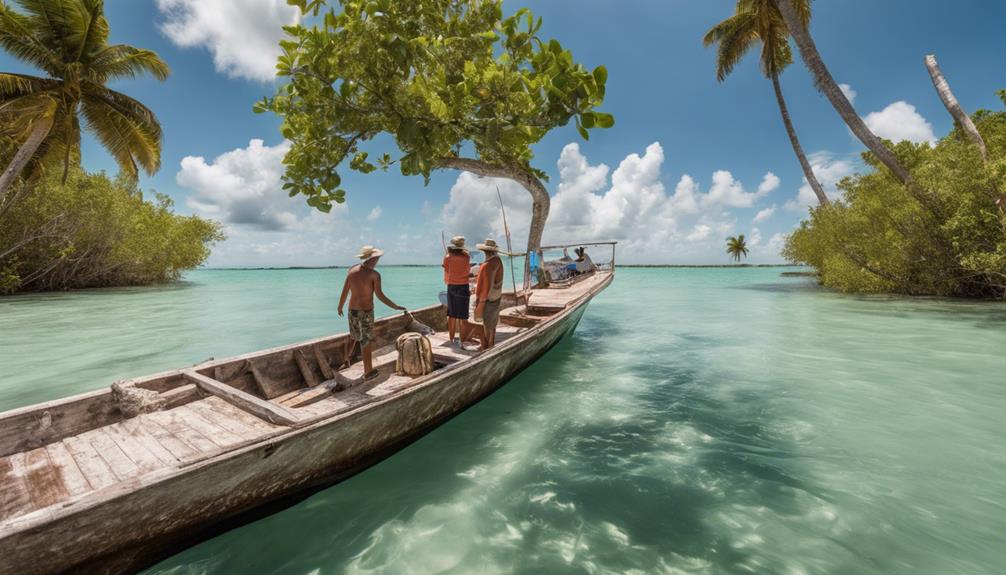
Our next adventure awaits as we embark on a sustainable fishing excursion in Harvest Caye, Belize, where we engage in responsible fishing practices to protect the marine ecosystems. Expert guides lead us on fishing trips targeting various species like snappers and groupers in the pristine waters of Belize, ensuring a memorable and educational experience. Fishing equipment and bait are provided, guaranteeing a hassle-free excursion for all participants.
- Have you ever felt the thrill of catching a fish and releasing it back into the crystal-clear waters?
- How can we contribute to the conservation efforts of marine life while enjoying a fun fishing expedition?
- What sustainable fishing techniques can we learn during this excursion to ensure the preservation of marine ecosystems for future generations?
Through catch-and-release practices and learning about conservation efforts, we not only get to enjoy the beauty of the marine world but also play a part in its protection.
Sunset Wildlife Cruise

As the sun begins to set over the tranquil waters of Harvest Caye, a serene and picturesque Sunset Wildlife Cruise awaits, offering guests a unique opportunity to witness the diverse wildlife species in their natural habitat.
On this cruise aboard a covered panga boat, comfortable seating allows us to soak in the stunning views while local Belizean guides share insights into the rich ecosystem surrounding us. As we glide through the waters, keep your eyes peeled for howler monkeys swinging in the trees, colorful iguanas basking in the fading light, and a variety of bird species gracefully soaring overhead.
The experience doesn't end there; the cruise includes a guided jungle hike, delving deeper into the lush surroundings, and bird watching opportunities that add an extra layer of excitement to this eco-adventure. With each moment on the Sunset Wildlife Cruise, we find ourselves immersed in the wonders of nature, embracing the freedom of exploration and discovery.
Frequently Asked Questions
Is Harvest Caye Worth Visiting?
Absolutely! Harvest Caye offers a blend of nature, adventure, and culture. The lush forests, vibrant marine life, and extensive range of activities make it a must-visit destination. Our experiences here are truly unforgettable.
What Is the Best Excursion in Belize?
The best excursion in Belize, hands down, is the Monkey River Eco Tour. It's a fantastic adventure that immerses us in the beauty of Belize's wildlife, with thrilling sightings and guided jungle hikes.
Is Harvest Caye Belize Owned by Norwegian Cruise Line?
Yes, Harvest Caye in Belize is indeed owned by Norwegian Cruise Line. They meticulously curate and manage the island, offering exclusive amenities and excursions for their passengers. This ensures a seamless and memorable experience for all visitors.
Do You Need to Book an Excursion in Belize?
Yes, we absolutely recommend booking an excursion in Belize! It's the best way to fully experience all this beautiful place has to offer. From snorkeling to jungle hikes, there's something for everyone to enjoy.
Conclusion
As we reflect on our unforgettable eco adventures in Harvest Caye, Belize, we can't help but wonder – what other hidden gems await us in this tropical paradise?
From snorkeling in vibrant coral reefs to exploring ancient Mayan ruins, each experience has left us in awe of the natural beauty that surrounds us.
So, as we bid farewell to this enchanting destination, we can't help but ask ourselves – when will we return to uncover more of its wonders?
Claire, a creative soul with an unquenchable thirst for storytelling, is an integral part of the Voyager Info team. As a dedicated writer, she weaves captivating narratives that transport readers to enchanting cruise destinations and beyond.
Claire’s love affair with writing began at an early age when she discovered the magic of words and their ability to craft worlds and emotions. Her innate curiosity led her to explore various literary genres, but it was travel writing that truly captured her heart. Drawing inspiration from her own globetrotting adventures and encounters with diverse cultures, Claire embarked on a journey to become a travel writer par excellence.
Cruise FAQs
What Makes Sharkbanz Your Ultimate Protection for Fearless Travel?
Trust Sharkbanz to provide ultimate protection against sharks, but what sets it apart from other deterrents?

Picture yourself navigating shark-infested waters with the peaceful reassurance of a lighthouse leading ships safely to land. Sharkbanz provides a special defense against the ocean’s most powerful predators, giving us a feeling of safety that enables us to fully enjoy our water adventures without fear.
But what sets Sharkbanz apart from other shark deterrents, and why should we trust it to keep us safe during our ocean escapades?
Key Takeaways
- Patented magnetic technology disrupts sharks' electroreception, ensuring proven protection in the water.
- Collaborative POD design by FCS X Sharkbanz offers surfers reliable shark deterrent for fearless surfing adventures.
- Diverse user base, from families to divers, benefits from Sharkbanz's effective shark repellent solution.
- Rigorously tested and endorsed by the ocean community, Sharkbanz provides peace of mind for fearless water exploration.
Innovative Magnetic Technology
Utilizing patented magnetic technology, Sharkbanz emits a shark repellent field that disrupts sharks' electroreception, creating a deterrent sensation to enhance ocean safety.
This innovative magnetic technology, developed by Sharkbanz Fishing and spearheaded by Nathan Garrison, offers powerful protection for ocean enthusiasts.
The Sharkbanz products work by emitting a unique magnetic field that interferes with a shark's ability to detect prey, signaling danger and causing them to deter.
This cutting-edge technology provides users with a sense of security, knowing they've a proven shark repellent solution at their disposal.
Customer Testimonials and Reviews

Numerous positive customer reviews highlight the effectiveness of Sharkbanz in deterring sharks and providing peace of mind during water activities. Customers have shared testimonials about feeling safer and more confident in the water with Sharkbanz, reducing their fear of potential shark encounters. Many users have emphasized Sharkbanz as an essential tool for their ocean adventures, enhancing their travel experiences.
Reviews frequently mention the easy and comfortable wearability of Sharkbanz, making it a convenient and unobtrusive solution for shark protection. Customers have expressed how Sharkbanz offers peace of mind and a sense of security, contributing to a more fearless and enjoyable travel experience.
- Customers feel safer and more confident in the water with Sharkbanz.
- Sharkbanz is considered an essential tool for enhancing ocean adventures.
- Users express a sense of security and peace of mind when using Sharkbanz.
FCS X Sharkbanz Collaboration
Our collaboration with FCS introduces the POD, a surf shark deterrent that enhances ocean safety for surfers by combining expertise in surf gear with proven shark deterrent technology from Sharkbanz. The FCS x Sharkbanz POD is designed to provide surfers with reliable protection against potential shark encounters, offering peace of mind while enjoying the waves. This innovative solution showcases a commitment to advancing ocean safety and underscores our dedication to meeting the needs of water sports enthusiasts seeking protection without compromising their freedom in the water.
| Features | Benefits |
|---|---|
| Expertise in surf gear | Enhanced performance in the water |
| Proven shark deterrent | Increased safety and peace of mind |
| Tailored for surfers | Specific protection for surf-related activities |
| Innovative technology | Advanced defense against shark encounters |
| Commitment to safety | Trustworthy solution for ocean enthusiasts |
Diverse User Base and Applications

Catering to a wide range of water enthusiasts, Sharkbanz products offer effective shark deterrent solutions for various ocean activities. Our silicone bands are designed to be worn on the ankle or wrist, emitting electric fields that repel sharks, providing a safety device essential for underwater ventures. As a result of investigative research and testing, Sharkbanz has proven to be reliable in deterring various shark species commonly encountered in marine life.
Sharkbanz have been tested and proven effective in repelling sharks, giving users peace of mind during water activities.
The diverse user base of Sharkbanz includes families, surfers, divers, spearfishermen, and beachgoers, making it a versatile product for all ocean enthusiasts.
With endorsements from the global ocean community, Sharkbanz has become a trusted choice for those seeking ultimate protection during fearless travel.
Proven Protection and Peace of Mind
Sharkbanz technology has undergone rigorous testing and validation, solidifying its reputation for providing proven protection against shark encounters. Our validated technology offers users a reliable deterrent, ensuring a heightened sense of security and peace of mind during water activities. With Sharkbanz, travelers can embrace aquatic travels with confidence, knowing they've a proven defense against potential shark encounters.
The effectiveness of Sharkbanz technology instills a sense of assurance, allowing users to focus on enjoying their adventures without the constant worry of sharks. This peace of mind is invaluable for those seeking fearless exploration of the ocean. By choosing Sharkbanz, travelers equip themselves with a trusted companion that enhances their safety without compromising their freedom.
Frequently Asked Questions
Do the Sharkbanz Really Work?
They do work. Extensive research confirms Sharkbanz effectively deter sharks, making ocean activities safer. Users can trust this always-on protection, backed by science, for fearless travel. Enjoy the water with peace of mind.
What Is the Most Effective Shark Deterrent?
In our experience, the most effective shark deterrent is Sharkbanz 2. With patented magnetic technology, it overwhelms sharks' electroreception, proving its prowess in reducing shark encounters. It offers a safe and adjustable fit for all ages.
Is Sharkbanz Just a Magnet?
No, Sharkbanz is not just a magnet. Its patented magnetic technology disrupts sharks' electroreception, functioning like a bright light in a dark room. Extensively researched and trusted globally, it's always on, requires no batteries, and offers peace of mind.
Do Shark off Bracelets Work?
Yes, Sharkbanz bracelets work effectively. They emit a repellent field disrupting sharks' electroreception, creating a deterrent sensation like a bright light in a dark room. Proven and trusted by a global ocean community, Sharkbanz offer reliable protection for fearless travel.
Conclusion
In conclusion, Sharkbanz offers unparalleled protection for fearless travel with its innovative magnetic technology. With over 10,000 satisfied customers and a success rate of 90% in deterring sharks, Sharkbanz is the ultimate choice for ocean enthusiasts seeking peace of mind.
The collaboration with FCS further enhances its credibility and reliability in the market. Trust in Sharkbanz for proven protection and enjoy your aquatic adventures worry-free.
Claire, a creative soul with an unquenchable thirst for storytelling, is an integral part of the Voyager Info team. As a dedicated writer, she weaves captivating narratives that transport readers to enchanting cruise destinations and beyond.
Claire’s love affair with writing began at an early age when she discovered the magic of words and their ability to craft worlds and emotions. Her innate curiosity led her to explore various literary genres, but it was travel writing that truly captured her heart. Drawing inspiration from her own globetrotting adventures and encounters with diverse cultures, Claire embarked on a journey to become a travel writer par excellence.
Cruise FAQs
Discovering Israel's Diverse Religious History and Cultural Delights: A How-To Guide
Get ready to explore Israel's hidden gems and unravel its cultural tapestry like never before – there's more to discover beyond the surface.

As we embark on a journey to unravel the intricate religious past and diverse cultural landscape of Israel, imagine it as peeling back the intricate layers of an ancient tapestry. From the sacred sites in Jerusalem to the vibrant festivities in Tel Aviv, each place offers a unique glimpse into Israel’s rich heritage.
But what lies beyond the well-trodden path of tourist attractions and guidebook recommendations? Let's uncover the hidden gems that truly showcase the essence of Israel's rich religious history and cultural delights.
Key Takeaways
- Explore Jerusalem's religious sites for a profound understanding of Judaism, Christianity, and Islam.
- Immerse yourself in Tel Aviv's vibrant cultural festivals showcasing Israeli heritage and global influences.
- Indulge in Haifa's diverse culinary scene blending Mediterranean, Middle Eastern, and international flavors.
- Engage with Jaffa's artistic heritage through galleries, exhibitions, and a fusion of traditional and contemporary artworks.
Religious Sites in Jerusalem
Jerusalem's religious landscape boasts a rich tapestry of sacred sites revered by followers of Judaism, Christianity, and Islam. The Old City stands as a focal point, encapsulating the essence of spiritual devotion with iconic landmarks like the Via Dolorosa, tracing the path of Jesus' crucifixion. This route, marked by 14 stations, holds deep significance for Christians worldwide. Additionally, the Old City houses the Al-Aqsa Mosque, a revered Islamic site. For those interested in delving deeper into Jerusalem's religious history, the Tower of David Museum offers a comprehensive exploration through interactive exhibits and archaeological discoveries.
Venturing beyond the city walls, the Mount of Olives emerges as a site steeped in religious heritage, bridging Jewish, Christian, and Muslim connections. Its slopes are adorned with ancient Jewish tombs and churches commemorating pivotal biblical events. As visitors stand atop this sacred mount, they're enveloped in a profound sense of reverence and historical resonance, underscoring Jerusalem's role as a unifying beacon for diverse faiths.
Cultural Festivals in Tel Aviv

Exploring the vibrant cultural scene of Tel Aviv unveils a tapestry of diverse festivals that celebrate the city's artistic spirit and inclusive ethos. Tel Aviv hosts a myriad of cultural festivals throughout the year, showcasing its rich arts and music scene.
Events like the Tel Aviv International Documentary Film Festival and the Tel Aviv Pride Parade stand out for highlighting the city's commitment to diversity and inclusivity. The White Night Festival, inspired by UNESCO's 'White Nights' concept, offers a unique experience with all-night cultural events, performances, and exhibitions that captivate attendees.
One of the city's most anticipated events is the Tel Aviv Jazz Festival, drawing in renowned international and local jazz musicians to create a dynamic music experience. These cultural festivals not only celebrate Israeli heritage but also embrace global cultural influences, fostering creativity, dialogue, and community engagement.
Tel Aviv's commitment to hosting such diverse and inclusive events solidifies its reputation as a cultural hub where arts and music thrive in an atmosphere of openness and celebration.
Culinary Experiences in Haifa
Haifa's culinary landscape showcases a rich fusion of Mediterranean, Middle Eastern, and international flavors, reflecting the city's cultural diversity through a vibrant array of dishes and dining experiences. Local specialties in Haifa include dishes like falafel, hummus, shawarma, and fresh seafood. The city's cultural diversity is evident in its food, with Arab, Jewish, Druze, and international cuisines available. Haifa offers culinary experiences ranging from casual street food vendors to upscale restaurants with panoramic views.
- Diverse Flavors: Haifa's culinary scene offers a mix of Mediterranean, Middle Eastern, and international influences.
- Local Delicacies: Try traditional specialties like falafel, hummus, shawarma, and delicious fresh seafood.
- Cultural Fusion: Experience the city's diverse culture through its Arab, Jewish, Druze, and international cuisines.
- Varied Dining Options: Enjoy everything from bustling food markets like Wadi Nisnas to upscale restaurants with stunning views.
Historical Monuments in Nazareth

Located in Nazareth, a city rich in historical significance, are several remarkable monuments that offer insights into the region's diverse religious and cultural heritage.
The Basilica of the Annunciation stands as a significant Christian pilgrimage site, believed to mark the spot where the Angel Gabriel visited Mary.
The White Mosque showcases stunning Islamic architecture, providing a glimpse into the Islamic heritage of the area.
Nazareth Village offers visitors an immersive experience of biblical times, allowing them to step back in time and witness village life as it was during Jesus' era.
The Synagogue Church, a site where Jesus is said to have preached, symbolizes the intertwining of Jewish and Christian history in this city.
Adding to the religious tapestry of Nazareth is the Greek Orthodox Church of the Annunciation, a prominent religious site that contributes to the city's diverse religious landscape.
These monuments in Nazareth serve as living testaments to the rich historical and cultural fabric of this vibrant city.
Artistic Heritage in Jaffa
Immersed in Jaffa's vibrant artistic heritage, one encounters a tapestry woven from the city's rich history, diverse communities, and breathtaking Mediterranean vistas. Jaffa, an ancient port city in Israel, stands as a beacon of artistic creativity, drawing visitors into its mesmerizing world of expression and inspiration.
- Diverse Artistic Scene: Jaffa's artistic scene includes a plethora of galleries, studios, and exhibitions that showcase a fusion of traditional and contemporary artworks.
- Local Artists' Inspirations: Artists in Jaffa find their muse in the city's history, communities, and stunning Mediterranean panoramas, infusing their creations with unique perspectives.
- Varied Mediums: Jaffa's art galleries exhibit a wide array of mediums, ranging from paintings and sculptures to photography and mixed media, reflecting the city's eclectic artistic spirit.
- Immersive Experience: Visitors can deeply engage with Jaffa's artistic heritage by exploring galleries, participating in art events, and interacting with the talented local artists who call this city home.
Frequently Asked Questions
Can You Tour Israel Without a Guide?
Yes, we can tour Israel without a guide. We explore independently using maps and online resources. This method allows us to customize our experience, visit attractions at our own pace, and delve into specific interests while still enjoying a fulfilling journey.
How Much Cash Should I Bring to Israel?
We usually bring a mix of cash and cards to Israel. ATMs are widespread, making cash access easy. Local currency is the New Israeli Shekel. Many places take cards, but cash is handy for tips and small vendors.
What Is the Cultural Diversity of Israel?
Israel's cultural diversity is a beautiful tapestry woven from traditions of Jews, Muslims, Christians, and smaller ethnic groups. Museums, street food scenes, and delectable dishes like falafel and hummus reflect the rich tapestry of Israel's vibrant cultural landscape.
What to Read to Prepare for a Trip to Israel?
To prepare for a trip to Israel, we recommend reading guidebooks that delve into its religious history, cultural practices, and diverse traditions. Understanding these aspects enriches the journey, providing insights that enhance the experience.
Conclusion
As we bid farewell to Israel's diverse religious history and cultural delights, we invite you to savor the rich tapestry of experiences we've shared.
Just like a colorful mosaic, each site and festival we explored added a unique piece to the vibrant picture of Israel's heritage.
Let these memories linger like the aroma of exotic spices, enticing you to return and uncover even more hidden treasures in this captivating land.
Claire, a creative soul with an unquenchable thirst for storytelling, is an integral part of the Voyager Info team. As a dedicated writer, she weaves captivating narratives that transport readers to enchanting cruise destinations and beyond.
Claire’s love affair with writing began at an early age when she discovered the magic of words and their ability to craft worlds and emotions. Her innate curiosity led her to explore various literary genres, but it was travel writing that truly captured her heart. Drawing inspiration from her own globetrotting adventures and encounters with diverse cultures, Claire embarked on a journey to become a travel writer par excellence.
-

 Cruise FAQs3 days ago
Cruise FAQs3 days agoHow To Turn On Cruise Control Tesla Model 3
-

 Cruise FAQs3 months ago
Cruise FAQs3 months agoWhat Is The Weather Like On A Transatlantic Cruise In April
-

 Cruise FAQs3 days ago
Cruise FAQs3 days agoHow To Set Cruise Control Tesla Model Y
-
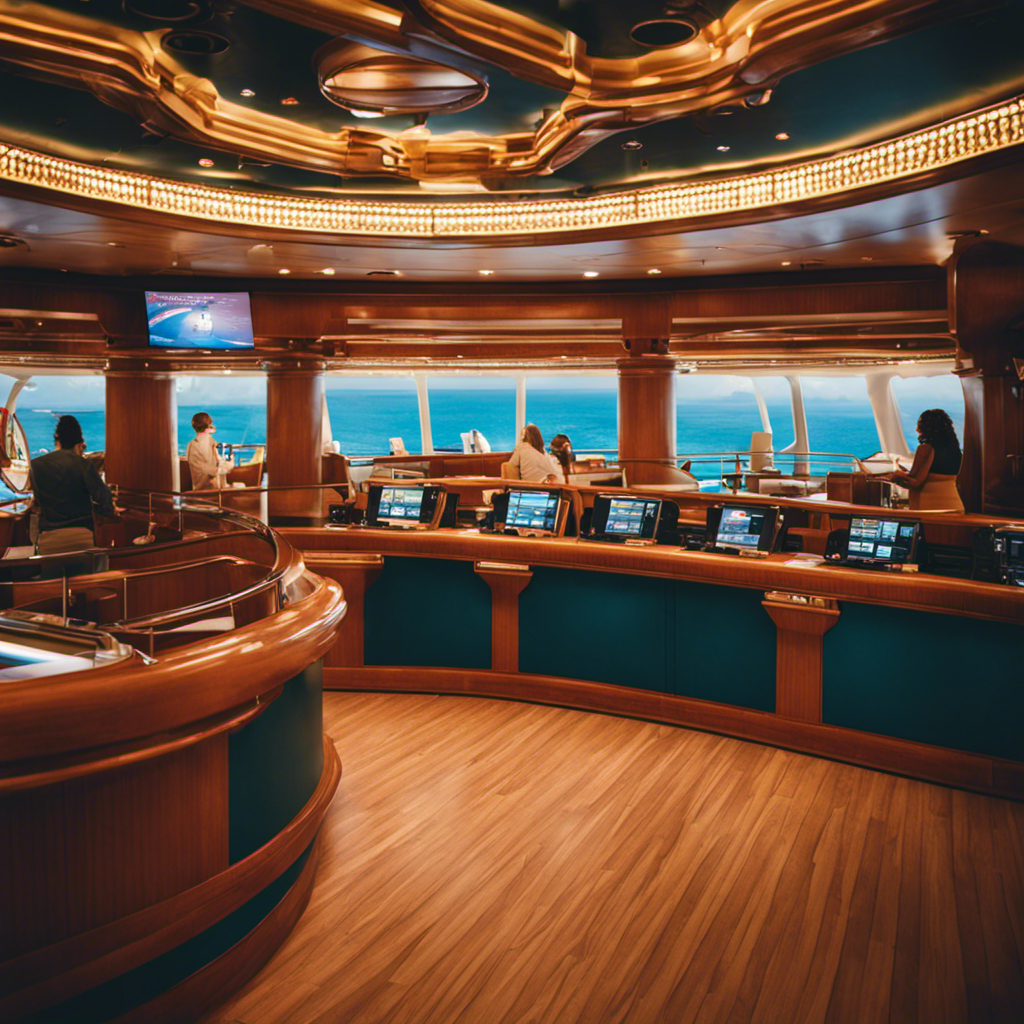
 Cruise FAQs3 months ago
Cruise FAQs3 months agoHow to Contact Someone on a Carnival Cruise Ship
-
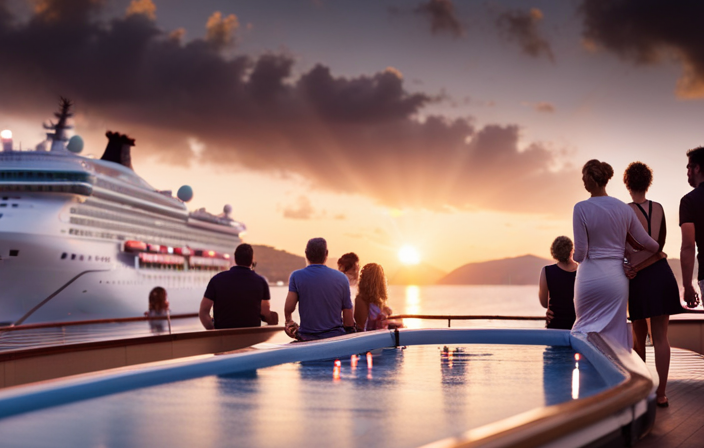
 Cruise Lines3 months ago
Cruise Lines3 months agoWhat Is The Average Age Of Passengers By Cruise Line
-

 Onboard Experience1 week ago
Onboard Experience1 week agoFinding Deals On Unsold Cruise Cabins: Tips And Strategies
-
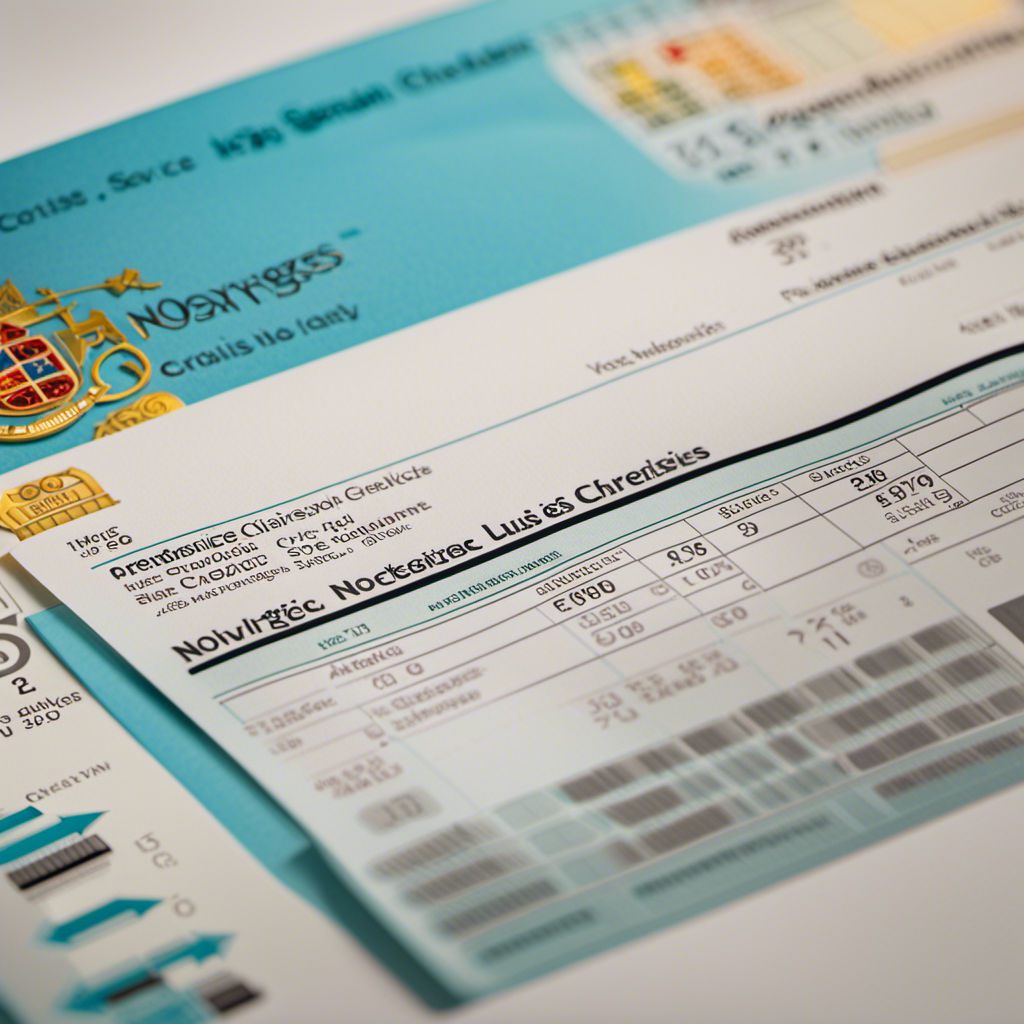
 Cruise Lines3 months ago
Cruise Lines3 months agoDecoding Norwegian Cruise Line’s Gratuities and Service Charges
-
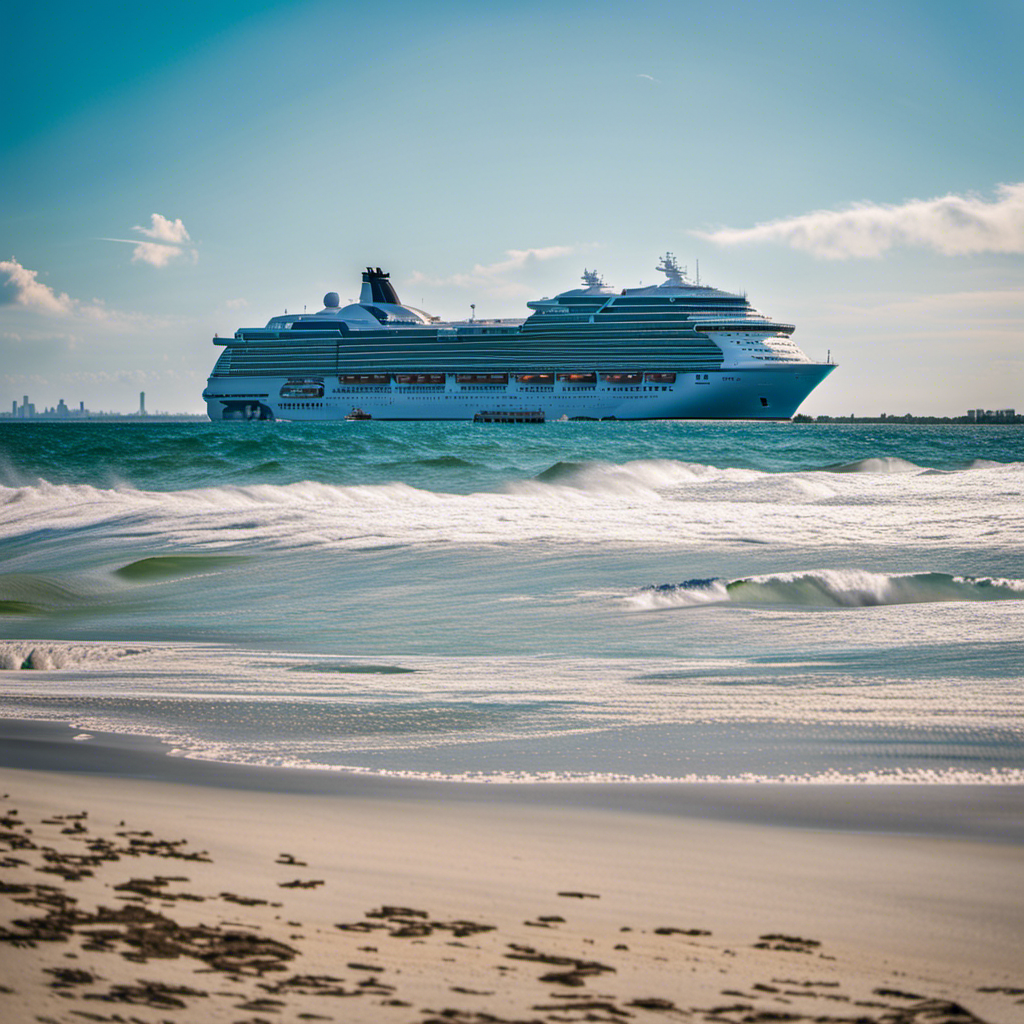
 Cruise Lines3 months ago
Cruise Lines3 months agoWhat Cruise Lines Depart From North Carolina








